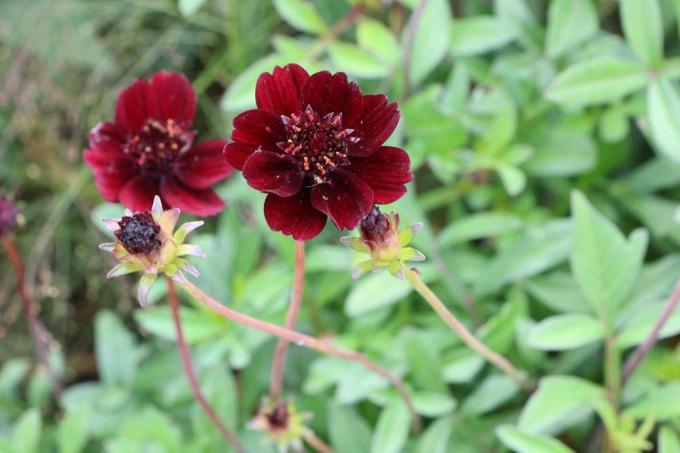
table of contents
- origin
- period
- Cut
- Overwinter
- care
- Spring habituation
- Tubers
- Tubers in spring
As the name suggests, the beautiful, reddish flowers exude the Chocolate flower a pleasantly beguiling scent of milk chocolate. The graceful plant is originally native to California and therefore does not tolerate the local, often frosty and severe winters. Therefore, it must be protected in winter if the hobby gardener wants to enjoy the sweet scent for several years. However, overwintering the bulbous plant is quite easy, it does not require a lot of care in winter.
origin
Chocolate flower hardy
Originally, the chocolate flower is native to the regions in California that are always warm in summer Due to the warm temperatures, it remains in a bed even in winter and can thus be cultivated for several years will. Unfortunately, this looks different in the local latitudes. The graceful plant must be protected from cold temperatures and frost and must not be left outside in winter. Because they cannot tolerate the temperatures that often prevail here in winter and cannot survive a winter at the summer location.
period
It is important that the chocolate flower is moved to a frost-free and protected location before the first frost. Night frosts can occur as early as the beginning of November, so the plant should be winterized by this time. In spring it looks similar, here the frosts can still occur up to the ice saints in May, so the Chocolate flower is not taken outside too early even in spring sunshine and it should be until after the ice saints being repaired.
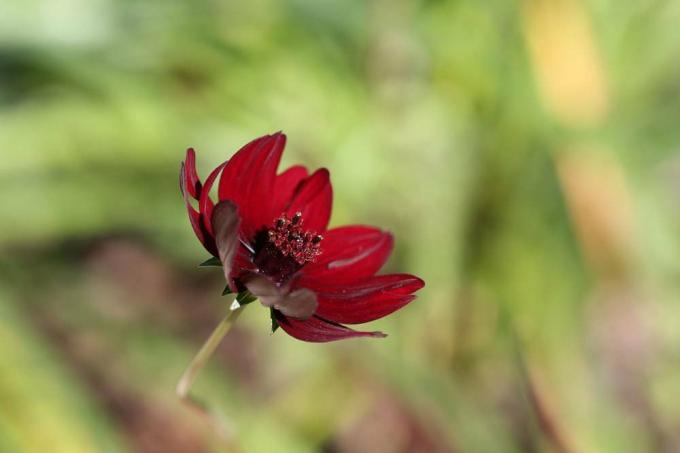
Cut
Cut before wintering
Because only the tubers of the chocolate flower overwinter and the plant from these again in the spring at warmer temperatures sprouts, it makes sense to prepare the plant for winter, whether cultivated in the garden bed or in a tub cut. The right time is when the flowers have faded and the leaves have started to turn yellow. The flowering period usually extends into October, after which it is cut.
You should proceed as follows:
- use a sharp knife or rose scissors
- disinfect them before work
- otherwise bacteria or fungi can enter
- the tuber becomes sick and does not survive the winter
- Cut the entire plant directly above the tuber
- Leftovers can be put on the compost
- Drying flowers for the production of new seeds

Overwinter
Hibernate in the bucket
If the chocolate flower was cultivated in a tub on the terrace or balcony, it can simply be overwintered in its container. In such a case, the tubers do not have to be removed from the soil. If the plant was cut back at the end of October, the pot with the tubers can be moved to the location for the winter.
This can look like this:
- dry, cool, dark basement room
- frost-free garage
- frost-free garden shed
- 8 ° to 10 ° Celsius are ideal
Often times, the floors in a basement or garage are cooler than the rest of the room. So that the cold does not rise into the pot from below and possibly the tubers here The container should be raised on a warming wooden or styrofoam board will. The room in which the bucket with the bulbs of the chocolate flower hibernates should have a window or a door to the outside. On frost-free days, it is advisable to ventilate the room so that any moisture can escape.
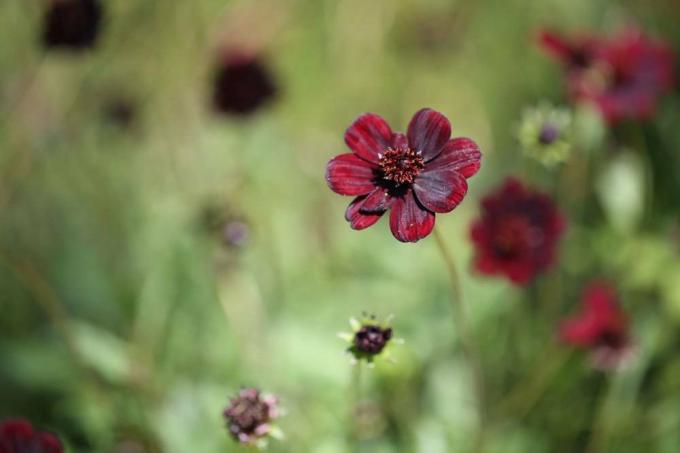
care
Care in the bucket
Caring for the tubers in the tub over the winter is relatively easy. Because the chocolate flower doesn't need much in winter. It is neither poured nor fertilized. The soil in the bucket even has to dry out so that the tubers don't rot. The tubers should therefore also be checked regularly. If rotten plants appear, they have to be removed and the tubers can then no longer be saved. The hobby gardener can tell that the tubers have survived the winter by the fact that they are firm and without pressure points.
Spring habituation
Container plants that get used to spring
In order for the chocolate flower to flourish again in full splendor in the New Year, it is essential to get used to the warmer temperatures and brightness in spring. As a rule, the flower can remain in the container in which it was overwintered. But every few years and if too many tubers have formed in a container, they should be removed from the pot, divided and divided into several buckets. This has the side effect of increasing the graceful plant. The following procedure is used to get used to it in spring.
- Beginning at the end of February, beginning of March
- Move the pots to a lighter and warmer place
- bright staircase or bright entrance area
- on warm days also outside
- protected from direct sunlight
- on the terrace or balcony
- start fertilizing
- water again regularly
- Avoid waterlogging
- Spend inside again on frosty nights
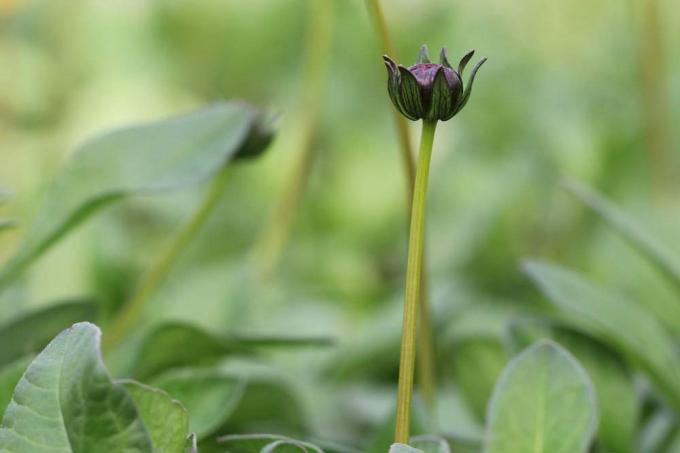
The chocolate flower will now slowly sprout again. However, as long as the nights can still be frosty, the night must be spent inside. It is only allowed to remain in its original summer location after the ice saints in May.
Tubers
Hibernate tubers
If the chocolate flower was cultivated in the garden bed, the tubers must be completely removed from the bed at the end of October after the plant has been cut. For this purpose, these are carefully removed from the ground and completely freed from the surrounding earth. If many tubers have grown together, they can also be divided by hand or a sharp, disinfected knife. So the hobby gardener has more tubers in the spring, which are then all set individually and from which even more decorative chocolate flowers can grow. Before digging up, the plant should not be watered any more so that it does not become too wet. Usually the natural rain in autumn is enough here. When hibernating the dug up flower bulbs, the following procedure is followed.
- Temperatures of 8 ° to 10 ° Celsius are ideal
- a dark, dry basement room is recommended
- the tubers can rot in the presence of moisture
- Dispose of rotten tubers immediately
- if the cellar is too dry, there is no moisture
- the tubers then shrivel
- Put in a breathable bag and hang up
- let it dry well beforehand
- An old potato sack or net is also suitable for this
- Ventilate the basement room on frost-free days
To protect them from evaporation and drying out in a very dry cellar, it is advisable to overwinter the tubers in a peat-sand mixture in a ventilated wooden box. A fresh, not too moist substrate can also help against dehydration. For example, fresh potting soil is suitable, which is filled directly from the closed sack into the box, in which the tubers are then distributed.
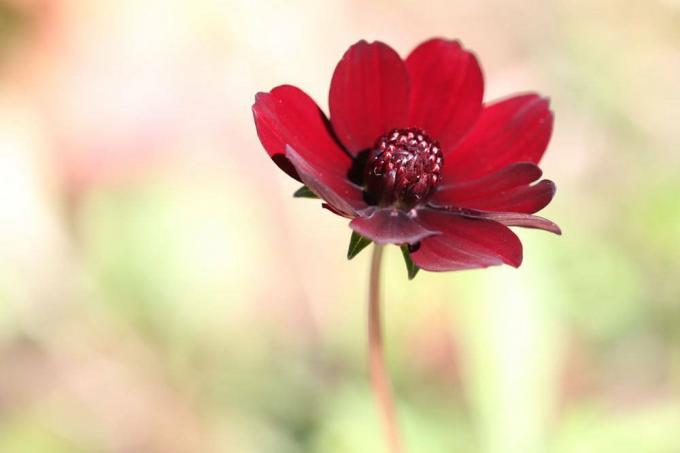
Tubers in spring
The tubers that have spent the winter without soil must not be planted in the bed before the ice saints in May. However, so that they can get used to the warmth and brightness and sprout out beforehand, they can be placed in potting soil in a bucket for transition. This will then be placed in a light and warmer place from February onwards. Not all tubers can still be used after winter, so rotten tubers, those with bruises and shriveled tubers should be sorted out because they can no longer be used. Proceed as follows with the tubers in spring.
- water regularly
- fertilize regularly
- Prepare the garden bed with compost
- Put the bucket outside on warm days
- protected from sun and rain on the balcony or terrace
- inside again on cold nights
- otherwise a bright place inside
- Avoid heating air, however
- better in a cool stairwell or entrance area
The chocolate flower is now already beginning to sprout. If it is moved into the garden bed in May after the last night frosts, you must proceed carefully here so that the young shoots are not damaged.
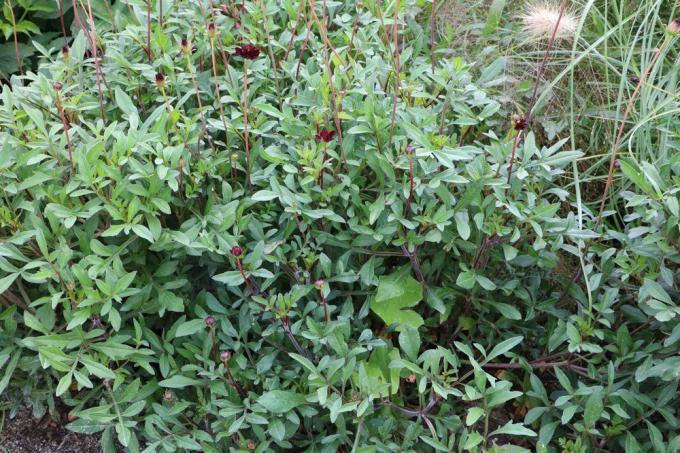
Hibernate outside in the bucket
If you have no way of finding a large and heavy bucket in which the chocolate flower was cultivated, to a sheltered location inside, who can also try to keep them outside overwinter. But this is often not the best solution, especially in very cold winter areas. However, it can succeed in areas where there is only a moderate winter. For the winter in the bucket, the pot must be protected as a whole.
The procedure is as follows:
- Cut the plant whole after it has withered
- Water moderately from September onwards
- Look for a sheltered corner on the terrace or balcony
- place the bucket on a block of wood or styrofoam
- Cover the whole with brushwood mats
- Place a brushwood mat over the bucket as well
- Plastic is not recommended
- The soil and tubers then do not get any air
- could rot or mold
The tubers in the tub should be monitored regularly. On frost-free and dry days, the brushwood mat above the ground can also be removed for a few hours, so that the earth ventilate and rotten bulbs or mold on the earth are avoided can. It is not allowed to pour. After winter in spring on warmer and lighter days, remove the brush mat over the pot regularly during the day, then water and fertilize the tubers again. During the night, the young plants that are now sprouting are protected again with the mat or a plant fleece until no more frosty nights are to be expected. Only then is the bucket completely unpacked and taken from the sheltered corner to its summer location.
